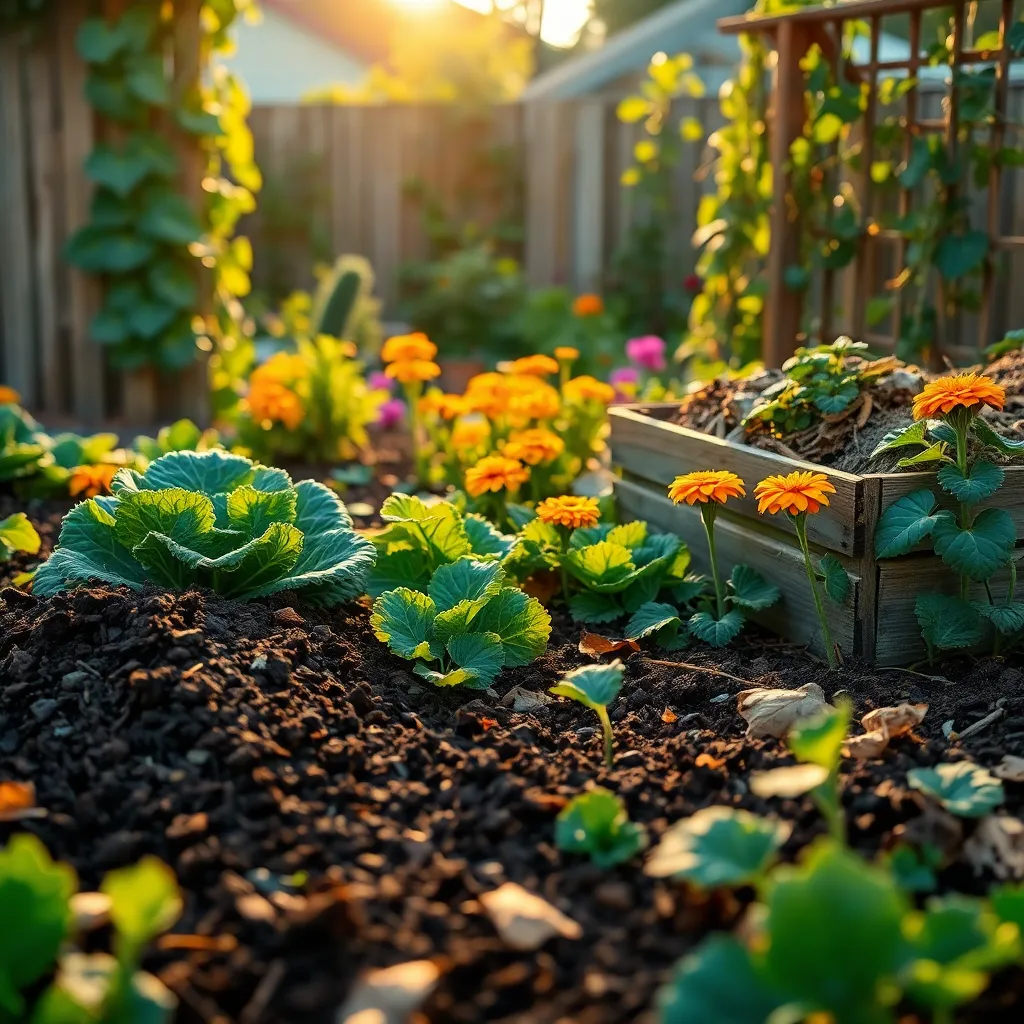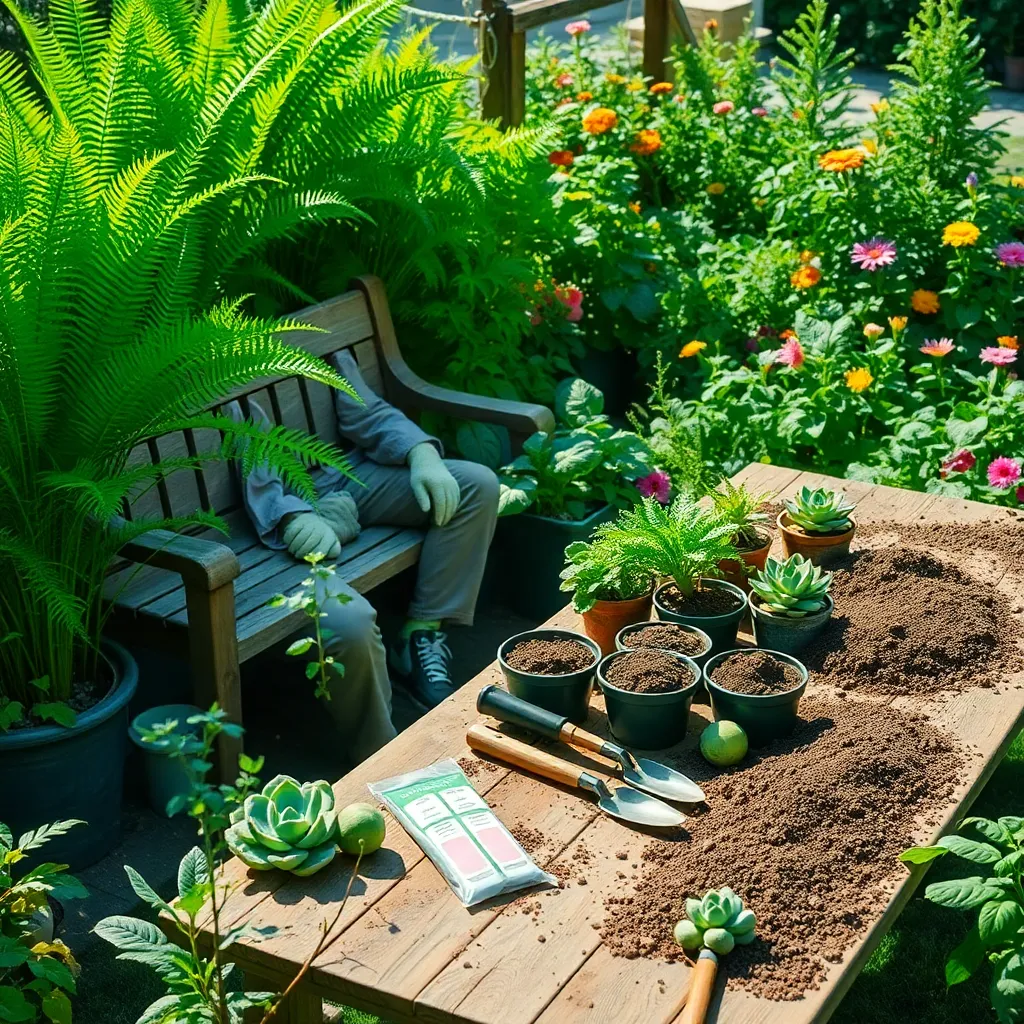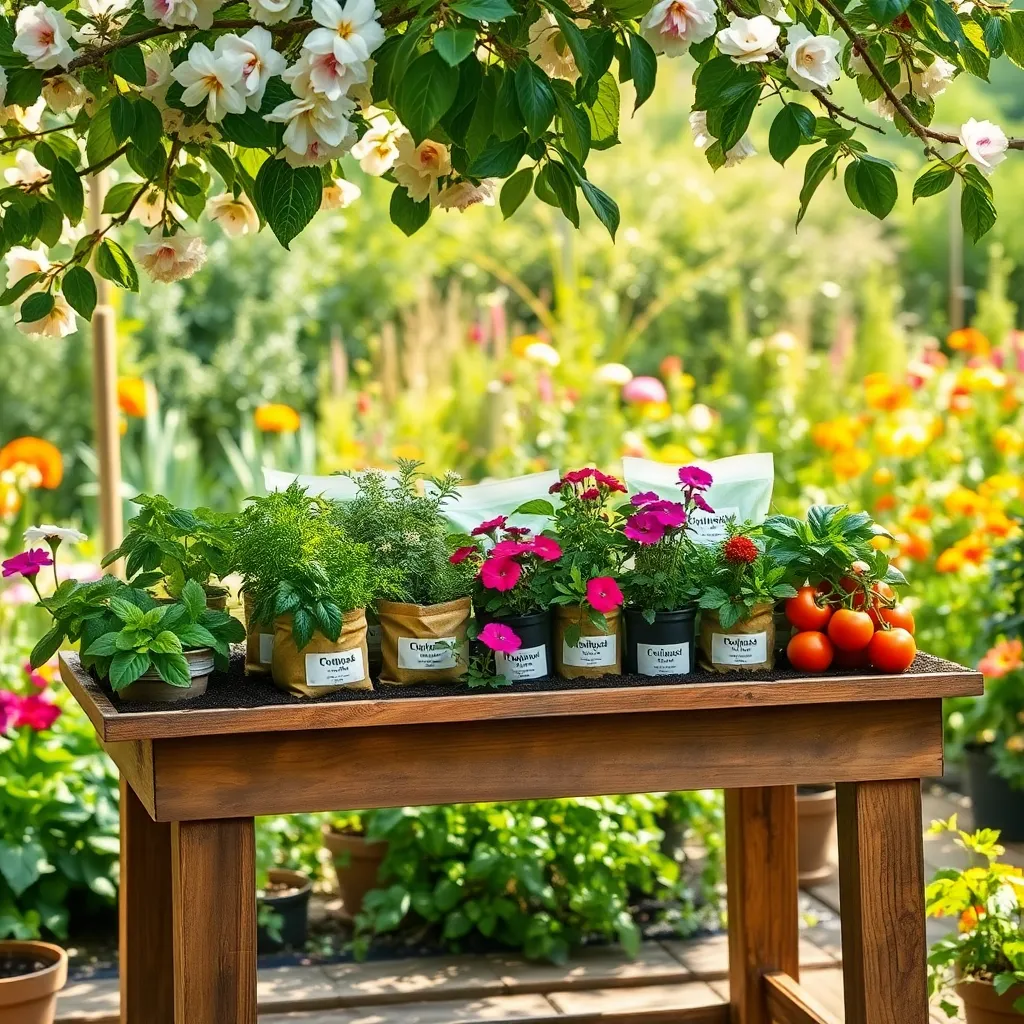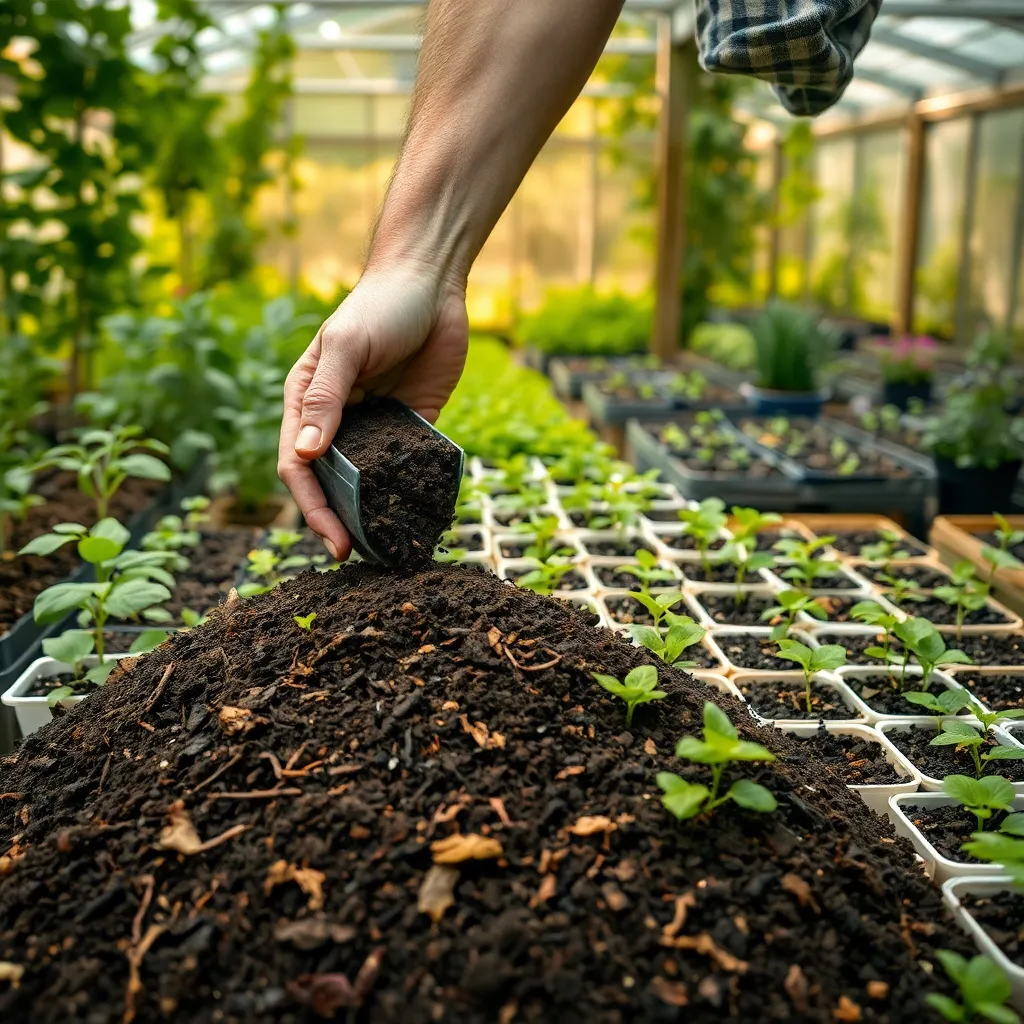Gardening is a dance between nature and nurture, and choosing the right compost is akin to selecting the perfect partner for your plants. Whether you’re just beginning your journey in the garden or have dirt under your nails from years of experience, understanding the nuances of compost can elevate your garden’s health and vibrancy. Compost is more than just decomposed organic matter; it’s the lifeblood of a thriving garden, rich in nutrients and teeming with life-giving properties. The right compost can transform your soil, boost plant growth, and even reduce the need for chemical fertilizers, making it an indispensable tool in any gardener’s arsenal.
In this article, we will explore the different types of compost available and how each can benefit various plant species. By the end of this read, you’ll be equipped with the knowledge to select the compost that best suits your garden’s unique needs. We will delve into the characteristics of composts, from homemade blends to commercially available options, and offer guidance on what may work best for your specific planting projects. With this information, you’ll be able to make informed decisions that will not only nurture your plants but also sustain the environment.
Embarking on this compost journey will empower you to make choices that align with your gardening goals, whether you’re cultivating a small herb garden or managing a lush landscape. This article will guide you through the process of identifying quality compost and understanding how to incorporate it into your gardening routine. Together, let’s unearth the secrets of composting and discover how a handful of well-chosen compost can make all the difference in your garden. Welcome to a world where your plants will thrive, your soil will thank you, and your gardening success will blossom.
Understanding Compost Types and Uses

Compost is an essential component in gardening, providing nutrients and improving soil structure. Understanding the different types of compost can help you choose the right one for your plants, ensuring they thrive in your garden.
One common type is green compost, made from grass clippings, vegetable scraps, and other green materials. This compost is rich in nitrogen, making it ideal for plants that require a nutrient boost, such as leafy greens and herbs.
Brown compost, on the other hand, includes dried leaves, straw, and wood chips. It is high in carbon and is best used to improve soil structure and drainage, especially beneficial for root vegetables and perennials.
For those looking to enhance soil moisture retention, vermicompost is an excellent choice. Created by worms breaking down organic materials, it is rich in nutrients and microbes that promote healthy plant growth, particularly in potted plants and small garden beds.
Additionally, mushroom compost can be a valuable amendment for certain plants. It is particularly useful for improving soil fertility and is great for flowering plants, but should be avoided for acid-loving plants like blueberries due to its alkaline nature.
When applying compost, always remember to mix it into the top few inches of soil rather than leaving it on the surface. This ensures that nutrients are readily available to plant roots and helps prevent nutrient runoff during watering or rainfall.
Advanced gardeners might consider creating their own compost, which allows for control over the ingredients and the composting process. Start by alternating layers of green and brown materials, keeping the pile moist and turning it regularly to speed up the decomposition process.
Assessing Plant Nutrient Needs

Understanding your plant’s nutrient needs is crucial for selecting the right compost. Plants show nutrient deficiencies through their leaves, so it’s essential to regularly inspect them for signs like yellowing or spots.
To start, perform a simple soil test to determine existing nutrient levels. These tests are available at garden centers and can help you decide if your soil lacks nitrogen, phosphorus, or potassium.
Once you know what your soil needs, choose compost that provides the missing nutrients. For instance, if your soil is low in nitrogen, opt for a compost rich in green matter like grass clippings or vegetable scraps.
Advanced gardeners can further tailor compost choices based on specific plant needs. Acid-loving plants like blueberries benefit from compost with pine needles, while roses thrive with a blend containing well-rotted manure.
Matching Compost to Plant Varieties

Understanding the specific compost needs of different plant varieties is crucial for successful gardening. Matching the right compost to your plants ensures they get the nutrients they need to thrive. For example, acid-loving plants like blueberries and azaleas benefit from a compost with a lower pH. Incorporating pine needles or peat moss can help create the right acidic conditions for these plants.
For vegetable gardens, a balanced compost with a mix of green and brown materials works best. Green materials provide nitrogen, while brown materials add carbon, creating a nutrient-rich environment. Leafy greens and root vegetables thrive in well-aerated, loamy compost. Regularly turning the compost pile enhances aeration and leads to quicker decomposition.
Container plants often require a specialized potting compost that retains moisture while providing adequate drainage. Adding perlite or vermiculite to your compost mix is beneficial for potted plants, ensuring they don’t become waterlogged. Herbs like rosemary and thyme prefer a sandy compost to mimic their natural Mediterranean habitat. This mix prevents root rot and allows for proper air circulation around the roots.
Advanced gardeners might experiment with creating their own custom compost blends tailored to specific plant needs. For instance, adding bone meal to your compost can enhance phosphorus levels, promoting root and flower development. Experimentation and observation allow for fine-tuning your compost strategy, optimizing growth conditions for each plant variety. Always remember, the right compost is a critical foundation for a healthy, thriving garden.
Evaluating Compost Quality Indicators

When evaluating compost quality, one of the first indicators to consider is its texture and consistency. High-quality compost should be crumbly and rich, resembling dark, fertile soil that easily breaks apart in your hands.
Another essential factor is the smell of the compost. A good compost should have an earthy aroma, while any sour or ammonia-like odors might indicate incomplete decomposition.
Temperature is also a crucial indicator of compost quality. A well-managed compost pile should reach temperatures of 130-160°F during the active decomposition phase, which helps in killing weed seeds and pathogens.
For more advanced gardeners, testing the pH level of your compost can provide further insights into its suitability for different plants. Ideally, the pH should be between 6 and 8, making it versatile for a wide range of plants.
Additionally, check the compost for the presence of visible contaminants like plastic or glass, as these can harm plant roots and degrade soil quality. Always source your compost from reliable suppliers who provide screened and contaminant-free products.
To further enhance compost quality, consider adding organic materials like well-rotted manure or leaf mold, which can improve nutrient content and soil structure. This is particularly beneficial for heavy feeders like tomatoes and squash, which thrive in nutrient-rich conditions.
Tips for Sustainable Composting Choices

Choosing sustainable composting options is essential for both your garden’s health and the environment. You can start by creating a simple compost pile using kitchen scraps, yard waste, and other organic materials. Begin with a balanced mix of greens and browns, such as vegetable peels and dried leaves, to maintain good compost health.
To enhance the composting process, turn your pile regularly to introduce oxygen, which speeds up decomposition. Ensure the compost stays moist like a damp sponge by watering it occasionally, especially during dry spells. Using a compost thermometer can help you monitor the temperature, ensuring it stays between 130-150°F for effective breakdown.
For gardeners with limited space, consider vermicomposting, which employs worms to break down organic matter efficiently. This method is excellent for apartment dwellers, as it requires minimal space and can be done indoors. Red wigglers are especially effective for vermicomposting due to their ability to process large amounts of organic material quickly.
Advanced gardeners might explore bokashi composting, an anaerobic process that ferments food waste using effective microorganisms. This method is particularly useful for composting meat and dairy, which are typically avoided in traditional composting. The process results in a pre-compost that can be buried in the garden to break down further and enrich the soil.
Conclusion: Growing Success with These Plants
In wrapping up, let’s revisit the five essential relationship concepts we explored. First, understanding your plant’s specific needs is akin to recognizing your partner’s unique desires. Second, just as compost benefits plants, nurturing a relationship requires consistent care and attention. Third, the right balance of nutrients in compost parallels the importance of balance and compromise in relationships. Fourth, the necessity of periodic assessments in gardening mirrors the need for regular relationship check-ins. Lastly, just as quality compost helps plants thrive, a foundation of trust and communication strengthens any partnership.
As a next step, take a moment today to engage in a meaningful conversation with your partner, reflecting on these principles. This small action can foster deeper understanding and connection.
Don’t forget to bookmark this article as a resourceful guide to revisit these insights whenever you need a relationship boost. Looking ahead, remember that successful relationships, like flourishing gardens, are cultivated with patience, care, and a willingness to grow together. By staying committed to these principles, you’re on a promising path to nurturing a thriving and enduring bond.

